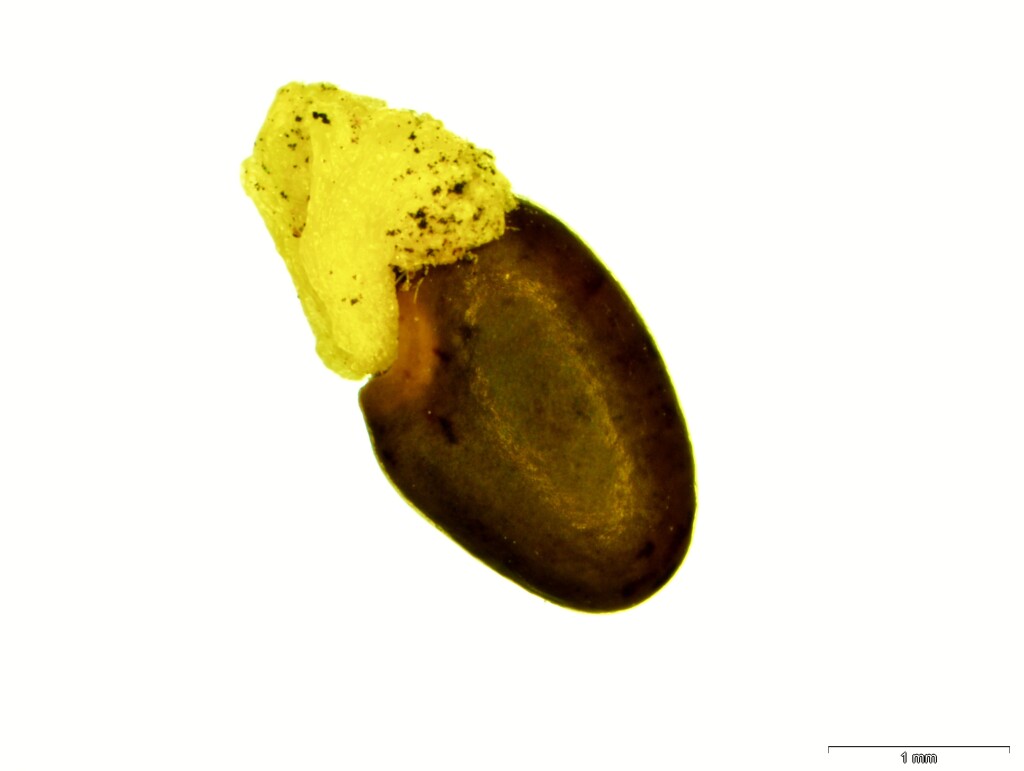Pultenaea graveolens
Tate Scented Bush-peaResinous, strongly perfumed shrub to 1.5 m high; branches pendulous; stems terete, covered with short, spreading hairs. Leaves alternate, ovate (2–)4–25 mm long, 0.5–3 mm wide; apex acute, not pungent; upper surface with pale hairs; lower surface scabrous with tubercle-based hairs, darker than upper surface; margin incurved; stipules c. 1 mm long, boat-shaped with thickened keel, resinous. Flowers axillary toward tips of short, lateral branches; bracts absent; calyx 3–6 mm long, covered with sparse, bristly hairs, usually with a yellow, waxy exudate; bracteoles attached at base of calyx tube, ovate, 1–3.5 mm long, resinous; standard 7–9 mm wide; ovary and most of style densely hairy. Pod ovate, hairy, lower half enclosed by calyx. Flowers Oct.
VVP, Gold, CVU, GGr. Also SA. Rare, known in Victoria from a few areas west of Melbourne (e.g. Brisbane Range, northern Grampians and midland areas between Nagambie and Castlemaine). Occurs in shrub under-storey of dry Stringybark or Ironbark forest.
Pultenaea graveolens is sometimes confused with P. hispidula but the strong perfume and waxy exudation is very distinctive. Further, the small, ovate, resinous stipules which are not united or appressed to the stem differ from those of P. hispidula which are lanceolate, usually partially united and have recurved tips.
Corrick, M.G. (1996). Pultenaea. In: Walsh, N.G.; Entwisle, T.J., Flora of Victoria Vol. 3, Dicotyledons Winteraceae to Myrtaceae, pp. 765–793. Inkata Press, Melbourne.
 Spinning
Spinning
